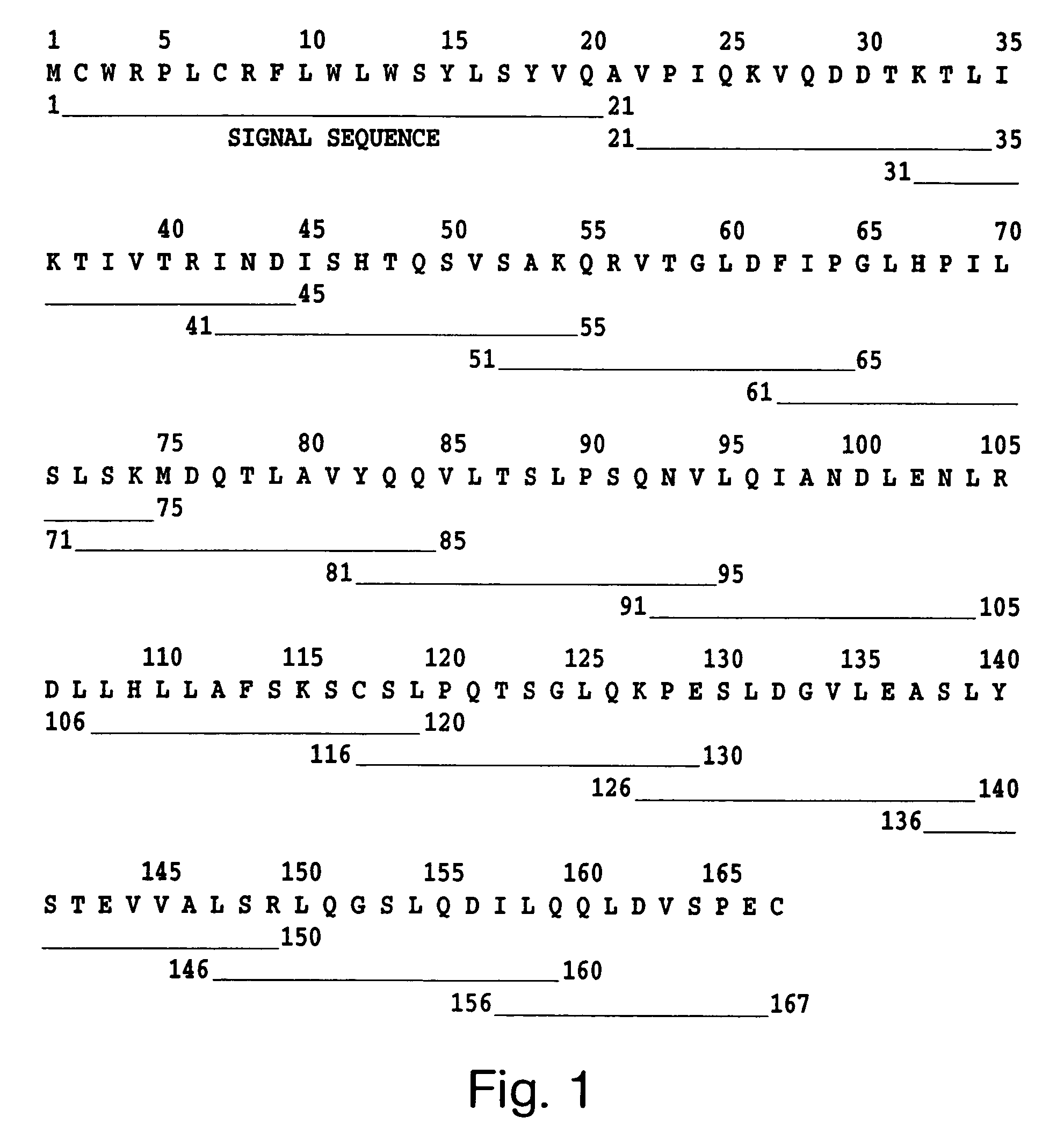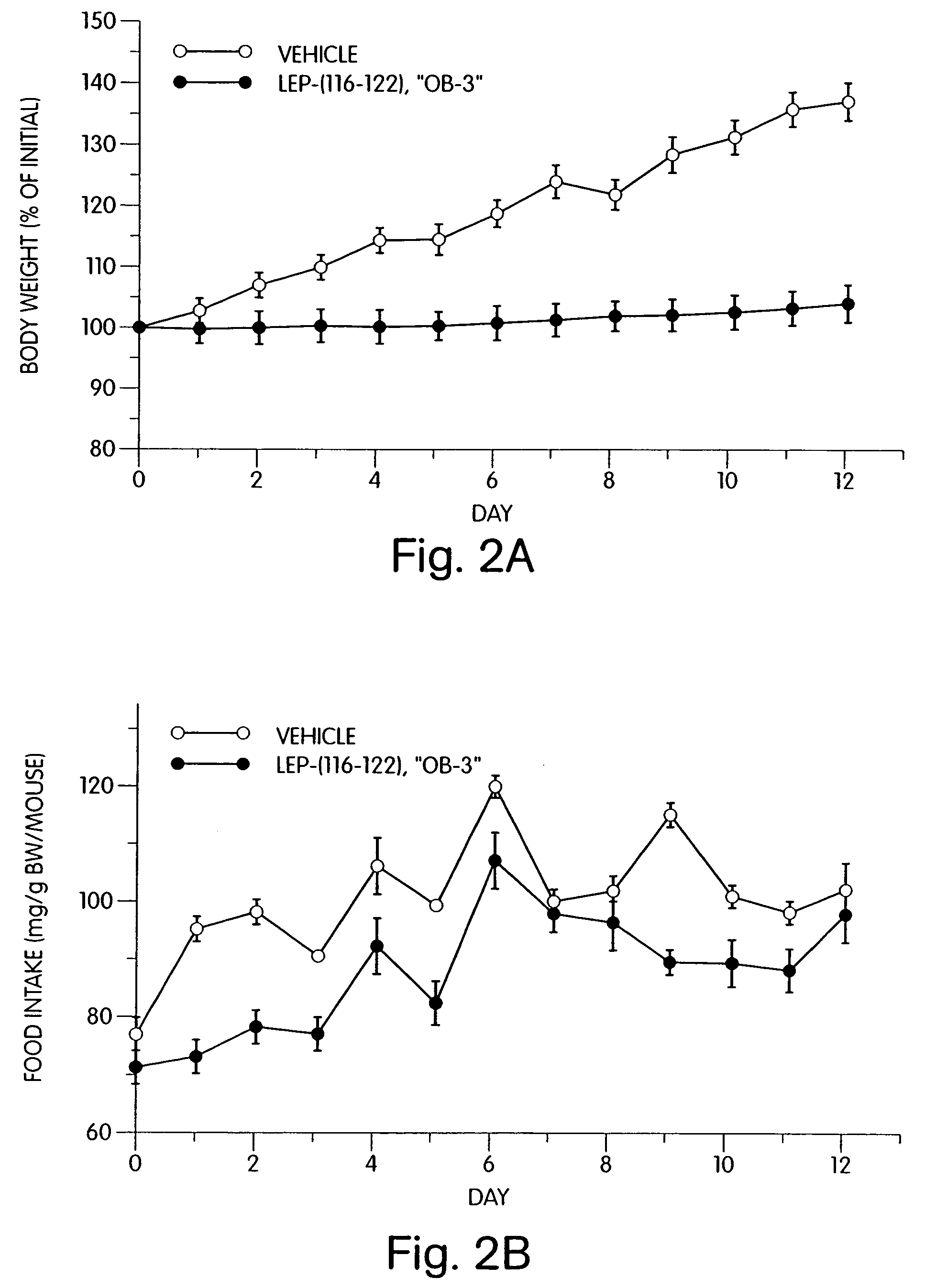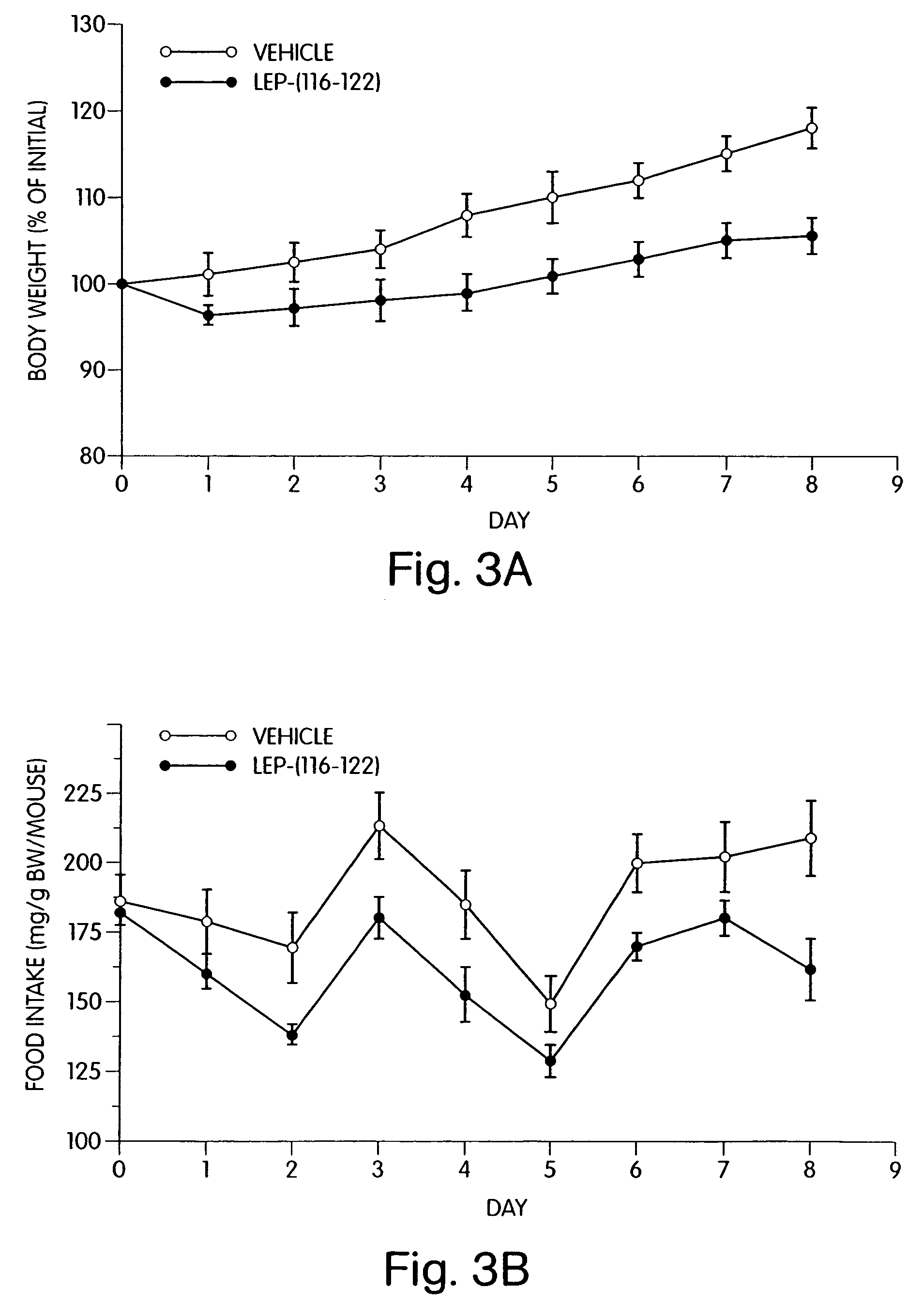Leptin-related peptides
a technology of peptides and leptin, which is applied in the field of body mass modulation methods and compositions, can solve the problems of reducing the bioavailability of recombinant affecting the ability of leptin resistance in obese individuals, and limiting factors that contribute to the resistance of leptin in obese individuals, so as to increase the bioavailability and increase the bioavailability
- Summary
- Abstract
- Description
- Claims
- Application Information
AI Technical Summary
Problems solved by technology
Method used
Image
Examples
example 1
Peptide Synthesis
[0172]Synthetic leptin-related peptide OB3 (116Ser-Cys-Ser-Leu-Pro-Gln-Thr122) (SEQ ID NO: 2) was synthesized as a peptide amide by the solid phase method on a Rainin Model PS 3 automated synthesizer. Fluorenylmethoxycarbonyl (“Fmoc”)-protected L-amino acids were assembled on Rink (4,2′,4-dimethyloxyphenyl-fluorenylmethoxycarbonyl-aminoinethyl) phenoxy resin. The completed peptide was cleaved from the resin with trifluoroacetic acid (“TFA”) using sterile deionized waster, ethanedithiol, anisole, and thioanisole as scavengers. The cleaved peptide was extracted with anhydrous ether, dried by lyophilization, and purified on a Rainin Dynamax preparative HPLC column (21.4 mm×25 cm; C18; 300 Å pore diameter) using a linear acetonitrile gradient (0–100%) containing 0.05% TFA. Fidelity of synthesis was confirmed by mass spectral analysis.
[0173]Additional peptides were synthesized by the solid phase method (see e.g., Merrifield 1963. J Am Chem Soc 85: 2149–2154) on a Rainin ...
example 2
Animal Models
[0174]The C57BL / 6J ob / ob mouse model has been used extensively by a number of laboratories to assess the effects of recombinant leptin on body weight and food intake. Since the ultimate objective of this research is to develop peptide analogs or mimetics of leptin with even greater potency than the native protein, consistency in the selection of an animal model is critical. Because the C57BL / 6J ob / ob mouse model is so well characterized, we selected it for use in our studies with leptin-related peptides.
[0175]Genetically obese (C57BL / 6J, ob / ob) and nonobese (C57BL / 6J, + / +) female mice were used in our study. The mice received two daily ip injections of leptin-related synthetic peptides in 0.2 ml phosphate buffered saline (“PBS”, pH 7.2) for a defined period of days, preferably up to 14 days. Food intake and body weight was monitored daily.
example 3
Biological Effects of Synthetic Leptin-Related Peptide
[0176]When administered to leptin-deficient female obese C57BL / 6J ob / ob mice (1 mg / day, ip, 12 days), synthetic OB3 reduced body weight gain and food intake when compared to vehicle-injected control mice (FIG. 2). Similar results were seen in leptin-resistant female obese db / db mice receiving synthetic OB3 (1 mg / day, ip, 7 days) (see FIG. 3).
[0177]FIG. 2 demonstrates the effects of synthetic OB3 on body weight gain and food intake by genetically obese female C57BL / 6J ob / ob mice. The graphs show changes in body weight (expressed as percent of initial weight) and food intake (expressed as mg / gm body weight / mouse) for mice given vehicle or synthetic leptin-related peptide OB3 (1 mg / day, ip, 12 days). Each value represents the mean±SEM change in body weight or mg food consumed / gm body weight / mouse in a group of six mice.
[0178]FIG. 3 demonstrates the effects of synthetic leptin-related peptide OB3 on body weight gain and food intake b...
PUM
| Property | Measurement | Unit |
|---|---|---|
| weight reducing effects | aaaaa | aaaaa |
| pH | aaaaa | aaaaa |
| body weight | aaaaa | aaaaa |
Abstract
Description
Claims
Application Information
 Login to View More
Login to View More - R&D
- Intellectual Property
- Life Sciences
- Materials
- Tech Scout
- Unparalleled Data Quality
- Higher Quality Content
- 60% Fewer Hallucinations
Browse by: Latest US Patents, China's latest patents, Technical Efficacy Thesaurus, Application Domain, Technology Topic, Popular Technical Reports.
© 2025 PatSnap. All rights reserved.Legal|Privacy policy|Modern Slavery Act Transparency Statement|Sitemap|About US| Contact US: help@patsnap.com



